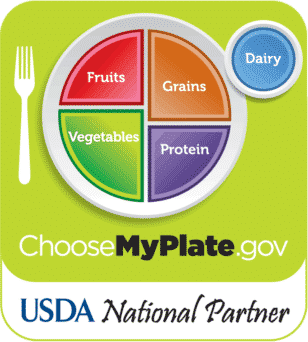By: Diane Welland, M.S., R.D.
In today’s world, we are surrounded by a sea of information and opinions – especially when it comes to diet and nutrition. Friends and family will say, “Drink more of that!” and news articles will report, “Eat less of this!” It also doesn’t help that the advice seems to change every day.
Distinguishing between information to trust and material to avoid can be a challenge. Here are a few tips to help you analyze nutrition research news so you can determine whether an article is sharing valid, comprehensive, and credible information.
1. Recognize the difference between “caused” and \”associated.”
Check whether the article says that something caused a result, or is is associated with a result – because there’s a difference. An association is a relationship or link between two entities. Causation means one variable directly affects another.
Because there isn’t a lot of certainty in nutrition science, researchers often can’t truly know if what they were studying caused a result. Therefore, when an article reports that there was a definite cause-effect relationship, it probably isn’t true. For example, be wary of headlines such as “Potato Chips Pile on the Pounds, Study Finds” or “7 Healthy Foods that Can Make You Fat.” These headlines imply that eating a specific food or drink independently causes weight gain, when there are a number of factors involved such as overall diet and lifestyle habits.
Trustworthy articles and studies will report that something may have caused a result, or that there appears to be an association between consuming something and an effect.
2. Look for high-quality studies.
Here are six key components to consider when determining if a study was conducted in a sound, credible way:
- Was the study published? Often times, the media covers studies that have been presented but not published. For a study to be published, it needs to go through a peer-review process that validates the research. Unpublished studies may give you an idea of where research is heading in the future, but a study is not considered trustworthy until it is evaluated by other scientists in the field and published.
- What was being studied? The study or article should clearly state what was being investigated. If the study was looking at the consumption of trans fat and cardiovascular disease risk, make sure that the news article is reporting specifically on disease risk and not something else.
- Who was being studied? Studies that look at one group of people cannot say that their results apply to different groups of people. For example, if a study observes women in Canada, it does not mean that the results are the same for men in Mexico. Other studies will focus on a certain gender, age, or group such as males aged 50-70 with a high risk of diabetes or just children. If a study targets a specific group, it does not represent the entire population. Some news articles fail to acknowledge this, and will overstate that the results apply to everyone. Additionally, avoid any news articles covering studies done on animals that imply that the same results apply to humans.
- How many people were being studied? While small studies are important because they signify a relationship, a large study is necessary to apply results to a population group. These studies include hundreds and sometimes thousands of subjects. Always check out the study size. When studies have too few participants, results may look more significant than they actually are.
- How long were they studied? If a study is too short, it could mean that real results did not have enough time to appear. If the study is too long, it could mean that there are unintended results occurring. The length of a study depends on what is being studied. Good studies will acknowledge the appropriate lengths of time for what they are examining.
- Know the study’s limitations. No matter how good a study may be, there are always variables that cannot be controlled or should be looked at in future studies. Be sure you understand what the study didn’t look at or could not control. A credible study will also mention what other studies found, and how its findings fit into the totality of the data available.
3. Avoid stories that use sensational phrases, or seem too simplistic to be true.
In the current age of clickbait, many reports on studies use exaggerated phrases to get people’s attention. However, keep in mind that nutrition research is generally uncertain. This means that it’s very rare for someone to find a new miracle superfood hiding in the jungle, or suddenly discover that milk can stop cancer. Sound articles will use balanced and conservative language.
4. Head straight to the source.
If you’re ever not completely satisfied with the information included in a news article, go straight to the source. Find a link to the actual research study, or go to a library and see if you can access it there. All published research studies include an abstract, or paragraph which summarizes the study.
At the end of the day, always remember that quality nutrition science takes time. While it can be tempting to jump to certain conclusions, an extra attentiveness to credibility will help you feel confident in the dietary and nutrition-related decisions you make for you and your family.







